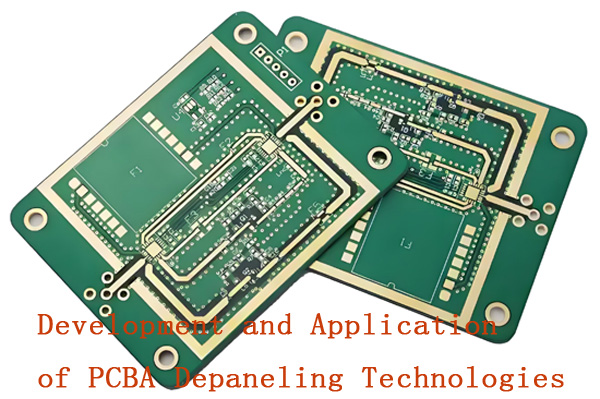If you’re not too familiar with PCBs, you might be wondering what makes them so useful. Don’t worry—this article gives you a clear and simple rundown of their main advantages. Let’s check them out together!
- Part 1. What are the advantages of using a PCB in electronics?
- Part 2. Why are PCBs preferred over breadboards?
- Part 3. How do PCBs improve circuit reliability?
- Part 4. What are the benefits of multilayer PCBs?
- Part 5. How does PCB design improve signal integrity?
- Part 6. Why is PCB better than point-to-point wiring?
- Part 7. What are the advantages of using flexible PCBs?
- Part 8. How do PCBs reduce electronic noise?
- Part 9. Why use a printed circuit board in high-frequency circuits?
- Part 10. How does PCB help in mass production?
- Part 11. FAQs about Advantages of PCBs
Part 1. What are the advantages of using a PCB in electronics?
PCBs provide a compact, organized, and durable platform for mounting electronic components. They ensure consistent electrical performance, reduce wiring errors, and allow easy integration into automated manufacturing. PCBs are also cost-effective in large-scale production and help achieve smaller, more efficient device designs.
Part 2. Why are PCBs preferred over breadboards?
PCBs offer permanent, reliable connections, unlike breadboards, which are meant for temporary testing. PCBs are better for final products because they are compact, vibration-resistant, and less prone to loose connections or interference. They also support more complex and layered designs, which breadboards cannot.
Part 3. How do PCBs improve circuit reliability?
PCBs use copper traces to create stable, low-resistance paths for current, reducing the risk of connection failures. The fixed layout prevents loose wiring and short circuits. With proper design and manufacturing, PCBs are also resistant to vibration, moisture, and thermal stress, ensuring long-term reliability.
Part 4. What are the benefits of multilayer PCBs?
Multilayer PCBs allow for more complex and compact circuit designs by stacking multiple layers of circuitry. This enables higher component density, better signal routing, reduced electromagnetic interference, and improved performance in high-speed or high-frequency applications, such as smartphones and servers.

Part 5. How does PCB design improve signal integrity?
Good PCB design includes careful trace routing, proper grounding, and controlled impedance, which help minimize signal loss, reflections, and interference. Shielding and spacing techniques reduce crosstalk between signals, improving the overall performance and reliability of high-speed or sensitive circuits.
Part 6. Why is PCB better than point-to-point wiring?
PCB connections are cleaner, more compact, and less prone to errors than manual point-to-point wiring. PCBs are faster to produce in bulk and easier to inspect or test. They also reduce the chance of wiring mistakes, physical damage, and performance issues caused by inconsistent connections.
Part 7. What are the advantages of using flexible PCBs?
Flexible PCBs can bend, fold, or twist, making them perfect for compact or irregularly shaped devices like wearables, cameras, and medical tools. They reduce assembly time and weight while offering shock resistance. They also eliminate the need for bulky connectors or cables in moving parts.
Part 8. How do PCBs reduce electronic noise?
By controlling trace layout, ground planes, and signal paths, PCBs help reduce noise and electromagnetic interference (EMI). Proper spacing and filtering components minimize signal distortion, which is especially important in sensitive analog or high-speed digital circuits.
Part 9. Why use a printed circuit board in high-frequency circuits?
PCBs support high-frequency circuits by enabling precise control over trace impedance, minimizing signal loss and reflections. Multilayer PCBs with dedicated ground and power planes reduce noise and enhance signal integrity, which is critical for RF, microwave, and high-speed digital designs.
Part 10. How does PCB help in mass production?
PCBs are designed for automated assembly, enabling fast and accurate placement of components using machines. This speeds up production, reduces labor costs, and ensures consistent quality across large volumes. PCBs also simplify inspection, testing, and repairs in industrial-scale manufacturing.
Part 11. FAQs about Advantages of PCBs
What makes PCBs more durable than other wiring methods?
PCBs use fixed copper traces and strong substrate materials, making them resistant to vibration, moisture, and mechanical stress. This improves durability over hand-wired or breadboard setups.
Are PCBs cost-effective for large-scale manufacturing?
Yes. PCBs can be mass-produced using automated processes, reducing labor costs and material waste, making them highly cost-effective for high-volume production.
How do PCBs contribute to miniaturization?
PCBs allow for compact layouts and multilayer stacking, enabling dense component placement and smaller device sizes, essential in modern electronics.
What are the thermal management advantages of PCBs?
PCBs can include heat-dissipating materials, thermal vias, and metal cores, which help manage heat and protect sensitive components from overheating.
Why are PCBs important in automotive electronics?
PCBs withstand harsh environments like heat, vibration, and moisture. Their reliability and compact size make them ideal for sensors, ECUs, and lighting in vehicles.
How does using a PCB increase assembly speed?
PCBs support automated soldering and component placement, speeding up the production process and reducing manual labor.
What are the advantages of surface-mount PCBs?
Surface-mount PCBs allow smaller, lighter components to be placed on both sides of the board, improving space efficiency and enabling faster automated assembly.
Why are PCBs better for automated assembly?
PCBs have precise layouts that match pick-and-place machine standards. This enables fast, accurate, and repeatable automated production.
What are the environmental benefits of using PCBs?
Modern PCBs can be designed for recyclability and use fewer raw materials than manual wiring. Their durability also reduces electronic waste over time.
How does PCB layout affect circuit performance?
A well-designed PCB layout improves signal flow, reduces interference, and ensures consistent electrical behavior, directly impacting performance and reliability.
A professional with over a decade of experience in the PCB depaneling industry.


